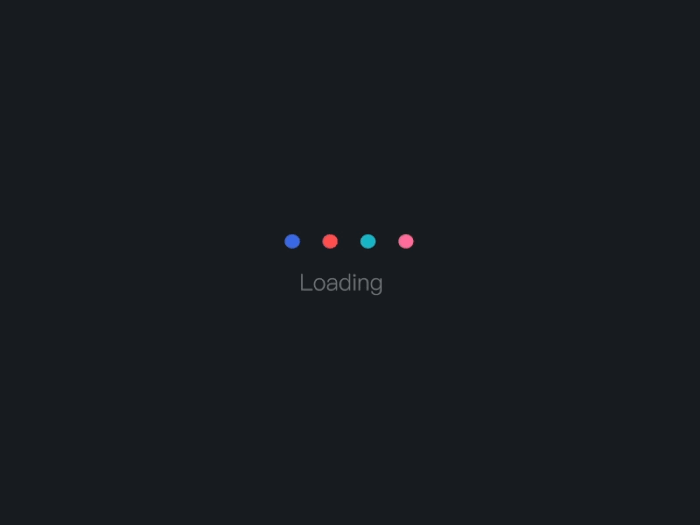您好,登錄后才能下訂單哦!
您好,登錄后才能下訂單哦!
這篇文章給大家分享的是有關使用Axios Element如何實現全局請求loading的內容。小編覺得挺實用的,因此分享給大家做個參考,一起跟隨小編過來看看吧。
背景
業務需求是這樣子的,每當發請求到后端時就觸發一個全屏的 loading,多個請求合并為一次 loading。
現在項目中用的是 vue 、axios、element等,所以文章主要是講如果使用 axios 和 element 實現這個功能。
效果如下:

分析
首先,請求開始的時候開始 loading, 然后在請求返回后結束 loading。重點就是要攔截請求和響應。
然后,要解決多個請求合并為一次 loading。
最后,調用element 的 loading 組件即可。
攔截請求和響應
axios 的基本使用方法不贅述。筆者在項目中使用 axios 是以創建實例的方式。
// 創建axios實例
const $ = axios.create({
baseURL: `${URL_PREFIX}`,
timeout: 15000
})然后再封裝 post 請求(以 post 為例)
export default {
post: (url, data, config = { showLoading: true }) => $.post(url, data, config)
}axios 提供了請求攔截和響應攔截的接口,每次請求都會調用showFullScreenLoading方法,每次響應都會調用tryHideFullScreenLoading()方法
// 請求攔截器
$.interceptors.request.use((config) => {
showFullScreenLoading()
return config
}, (error) => {
return Promise.reject(error)
})
// 響應攔截器
$.interceptors.response.use((response) => {
tryHideFullScreenLoading()
return response
}, (error) => {
return Promise.reject(error)
})那么showFullScreenLoading tryHideFullScreenLoading()要干的事兒就是將同一時刻的請求合并。聲明一個變量needLoadingRequestCount,每次調用showFullScreenLoading方法 needLoadingRequestCount + 1。調用tryHideFullScreenLoading()方法,needLoadingRequestCount - 1。needLoadingRequestCount為 0 時,結束 loading。
let needLoadingRequestCount = 0
export function showFullScreenLoading() {
if (needLoadingRequestCount === 0) {
startLoading()
}
needLoadingRequestCount++
}
export function tryHideFullScreenLoading() {
if (needLoadingRequestCount <= 0) return
needLoadingRequestCount--
if (needLoadingRequestCount === 0) {
endLoading()
}
}startLoading()和endLoading()就是調用 element 的 loading 方法。
import { Loading } from 'element-ui'
let loading
function startLoading() {
loading = Loading.service({
lock: true,
text: '加載中……',
background: 'rgba(0, 0, 0, 0.7)'
})
}
function endLoading() {
loading.close()
}到這里,基本功能已經實現了。每發一個 post 請求,都會顯示全屏 loading。同一時刻的多個請求合并為一次 loading,在所有響應都返回后,結束 loading。
功能增強
實際上,現在的功能還差一點。如果某個請求不需要 loading 呢,那么發請求的時候加個 showLoading: false的參數就好了。在請求攔截和響應攔截時判斷下該請求是否需要loading,需要 loading 再去調用showFullScreenLoading()方法即可。
在封裝 post 請求時,已經在第三個參數加了 config 對象。config 里包含了 showloading。然后在攔截器中分別處理。
// 請求攔截器
$.interceptors.request.use((config) => {
if (config.showLoading) {
showFullScreenLoading()
}
return config
})
// 響應攔截器
$.interceptors.response.use((response) => {
if (response.config.showLoading) {
tryHideFullScreenLoading()
}
return response
})我們在調用 axios 時把 config 放在第三個參數中,axios 會直接把 showloading 放在請求攔截器的回調參數里,可以直接使用。在響應攔截器中的回調參數 response 中則是有一個 config 的 key。這個 config 則是和請求攔截器的回調參數 config 一樣。
感謝各位的閱讀!關于“使用Axios Element如何實現全局請求loading”這篇文章就分享到這里了,希望以上內容可以對大家有一定的幫助,讓大家可以學到更多知識,如果覺得文章不錯,可以把它分享出去讓更多的人看到吧!
免責聲明:本站發布的內容(圖片、視頻和文字)以原創、轉載和分享為主,文章觀點不代表本網站立場,如果涉及侵權請聯系站長郵箱:is@yisu.com進行舉報,并提供相關證據,一經查實,將立刻刪除涉嫌侵權內容。